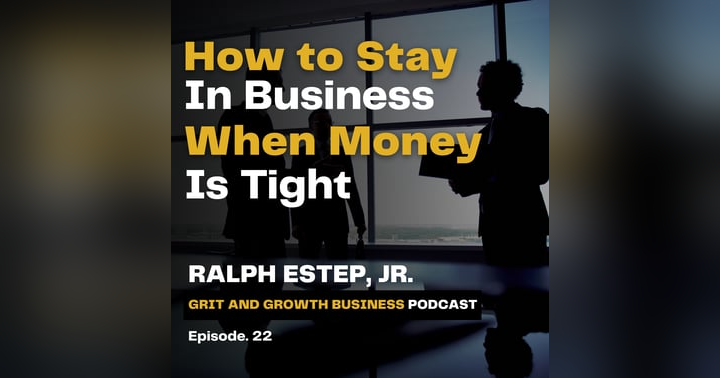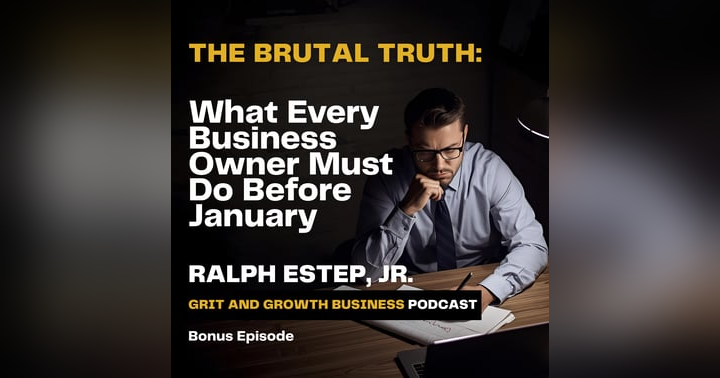Your Business Model Might Be the Problem

Feeling Stuck in Your Business? It's Time to Redefine Your Business Model!
You're working harder than ever. You're pouring in the hours, making the sacrifices. But the needle just isn't moving. Or maybe, when it does move, it’s not enough to truly support your life or give you the freedom you dreamed of. You feel caught in a relentless cycle of constantly chasing the next client, the next project, just to keep the lights on. At some point, you have to wonder if you’re missing the signs that your business model might be the problem.
It’s exhausting, isn't it? That feeling that you're doing all the right things – delivering great work, providing excellent customer service – but the business itself feels like it’s fighting against you.
At Grit and Growth Business, I understand this struggle. As an accountant, coach, and business owner for over 30 years, I've seen countless entrepreneurs face this exact wall. Sometimes, the issue isn't how hard you're working, but what you're working on, and more specifically, how you're working on it. What if the very structure of your business – your business model – is silently sabotaging your growth and keeping you stuck?
This isn't about blaming you. You built this. It's your identity, your livelihood. But acknowledging that your business model might be the problem is a crucial, even freeing, step. It means you can stop pushing harder and start pushing smarter.
Are You Trapped? Symptoms of a Problematic Business Model
How do you know if your business model might be holding you back? Here are common symptoms that translate into real-world pain for you:
- You're Constantly Trading Time for Money: This is a classic trap for service professionals, consultants, and many trades. If your income directly scales with the hours you personally put in, you've got a ceiling. The pain here is the profound lack of leverage. You can’t get sick, you can’t take a real vacation, you can’t scale without cloning yourself. Your business owns you, not the other way around.
- Thin Margins, No Matter How Busy You Are: Your revenue might look impressive on paper, but when you look at what's left after all the expenses, it's just... not enough to justify the effort. You're generating activity, but not profit. The pain? Constant financial stress, inability to invest in your business or yourself, and that demoralizing feeling of being on a hamster wheel, running faster just to stay in place.
- Customer Acquisition is Exhausting and Expensive: Does every new client feel like starting from scratch? Are you constantly spending a ton of time and money just to get a single new customer, only to repeat the entire laborious process immediately? The pain here is the lack of recurring revenue or strong referral streams. It's a never-ending sales cycle that drains your energy and your marketing budget, preventing sustainable growth.
- No Clear Path to Scale or Exit: You know you can't keep doing things exactly as they are forever. But when you try to imagine growing, or even selling your business one day, you realize it's completely dependent on you personally. The pain is a profound lack of control over your future. You're building a job for yourself, not a valuable, transferable asset.
These are not personal failings, my friend. These are often the painful consequences of a business model that isn't built for the long game you're trying to play.
Three Gritty Moves to Diagnose & Shift Your Business Model
The good news is, you can start to diagnose and potentially shift your business model to one that actually supports your life and allows for sustainable growth. It starts with looking at your business with fresh eyes, not just focusing on what’s broken, but what’s missing in your structure.
Here are three concrete, actionable steps you can take this week:
- The One-Page Business Model Map:
- Action: Dedicate 30-60 minutes to sketch your current business model on a single sheet of paper (or a simple digital document). Clearly define:
- Who do you serve? (Your ideal customer).
- What core problem do you solve for them? (Your core value).
- How do you deliver that solution? (Your main products/services and the general process).
- How do you get paid? (Hourly, project-based, retainer, subscription, product sales, etc.).
- What are your biggest recurring costs? (Even rough estimates are fine).
- Impact: This simple act of visual clarity will immediately highlight strengths, weaknesses, and potential bottlenecks in your current model, revealing where you might be unknowingly limiting yourself.
- Action: Dedicate 30-60 minutes to sketch your current business model on a single sheet of paper (or a simple digital document). Clearly define:
- Identify Your "Leverage & Recurring Revenue" Gaps:
- Action: Look at your One-Page Business Model Map and brainstorm:
- Leverage Gap: Where are you personally doing repeatable tasks that could be packaged, systematized, or delegated? Can you create a product, a repeatable service package, or a system that allows you to serve more clients or generate more revenue without adding direct, proportional time? (e.g., can hourly consulting become a fixed-price training program? Can custom builds use standardized components?)
- Recurring Revenue Gap: Is there any way to turn one-time sales into ongoing relationships or predictable income? (e.g., can you offer maintenance contracts, subscription services, or retainers?)
- Impact: Exploring these gaps reveals opportunities to create more predictable income streams and reduce your personal dependence on hours-for-dollars, setting the stage for true scalability and freedom.
- Action: Look at your One-Page Business Model Map and brainstorm:
- Get Real: Talk to Your Ideal Customers:
- Action: Reach out to 2-3 of your most ideal, satisfied customers this week for a brief, informal chat (15-20 minutes). Do NOT try to sell them anything. This is purely for discovery. Ask open-ended questions like: "What was your biggest challenge before you hired/bought from me?" "What do you value most about what I provide?" "What other problems are you facing that I might be able to help with?"
- Impact: Direct customer feedback is invaluable. It can validate your current model, uncover new revenue streams, and confirm if your proposed model shifts are truly aligned with market demand, reducing wasted effort.
Unstuck Your Business, Unleash Your Potential
Examining your business model can be an uncomfortable but incredibly freeing exercise. It allows you to move beyond just working harder, and start working smarter – building a business that serves your goals, not just consuming your time and energy.
You have the grit. You have the drive. Now, let’s make sure you have the right model to turn that grit into sustainable growth and the kind of freedom you truly deserve.
Ready to Redefine Your Business Model?
Download your free Action Plan Sheet for this episode here. This practical guide will walk you through mapping your current model and identifying those initial areas for leverage and recurring revenue.








